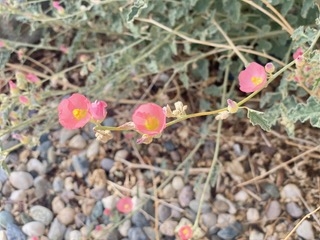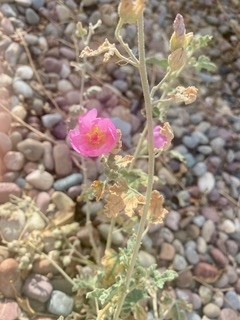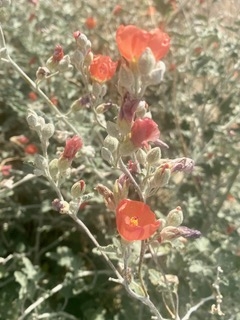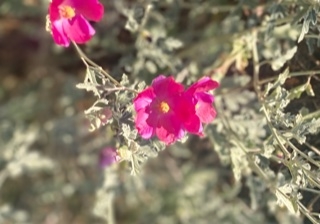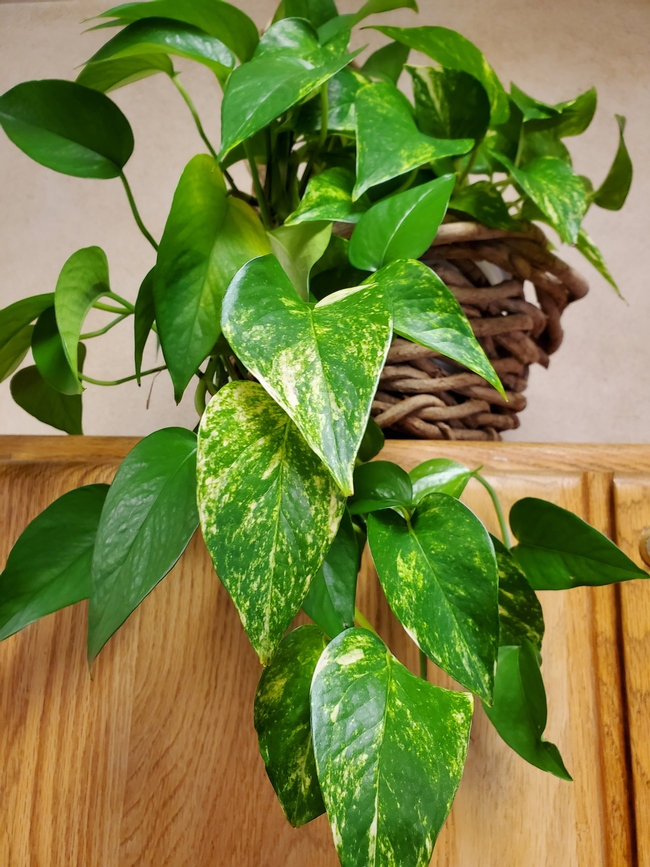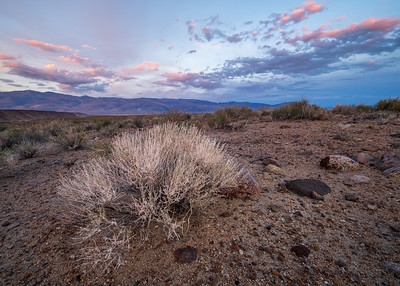- (Public Value) UCANR: Promoting healthy people and communities
- Author: Ryan Daugherty
Most of us grew up with a lawn. For many of us, mowing the lawn was a part of our weekly chores growing up; yellow spots were treated like a black mark, and a dandelion popping up was like a declaration of war. We have all been brought up in or have participated in lawn care culture in one way or another, without many of us having much of an idea why. Why is the lawn so quintessential in our culture?
The concept of a lawn didn't really exist until relatively recently. Grass was used in landscapes as a frame for more interesting fare, like in the Gardens at Versailles, using it as the tapis vert or green carpet. In fact, before the 18th century, the word lawn itself didn't mean what it does today. The word laune meant a glade or clearing in a forest. Later, as we domesticated livestock, it came to mean more of a pasture where cattle would graze. The concept of the word "lawn" being used to mean a manicured grassy area was first recorded in 1733 in Europe. When lawns were featured in landscapes at the time, they were a status symbol of great wealth. You had to be wealthy to own land, and even wealthier to own land that generated no profit and just looked pretty.
A grass lawn as a landscape feature is largely the influence of "England's Greatest Gardener," Lancelot Brown, commonly known by his nickname "Capability" Brown, because he would often tell his clients that their property had the capability for improvement. Capability was a renowned landscape architect, known for a radical new style at the time called a "gardenless garden" as opposed to the patterned gardens of the day. The hallmarks of Brown's gardenless style were big undulating seas of grass leading straight up to the manor, with scattered plantings of trees and man-made lakes. He designed the landscapes of over 170 of the finest estates in England, making him one of the most prolific and influential landscape architects to come out of Europe. When the American aristocracy (many of them founding fathers) visited these estates, they were enthusiastic about what they saw and incorporated lawns into their estates back home in places like Washington's Mt. Vernon and Jefferson's Monticello. Thus, lawns as a landscape made it to a fledgling United States.
As the United States began to grow both in population and economically, the country took on a decidedly urban look with cramped housing for the new immigrants flooding into the land of opportunity. The European notion of getting away to the countryside couldn't really be practiced because we didn't have countryside; we had a wild, rugged frontier, which had its charms but being a relaxing place to have a picnic wasn't one of them. In response, there was a shift in the ethos of American landscape architecture. There was a growing thought that we wanted our landscapes to be open, welcoming, and ample. Around the same time, "The Father of American Landscape Architecture," Frederick Law Olmsted, designed Central Park in New York. His design heavily featured large grassy areas, strategic plantings of trees, and man-made lakes. Sound familiar? This work influenced other communities across the country to follow suit and design their public spaces with turf as a prominent feature.
Later in 1868, Olmsted would have the opportunity to work on the designs for the first planned suburb in Riverside, Illinois. He required that the houses be set back 30 feet from the road for… you guessed it, a lawn. This suburb served as an example for more housing developments not only because it fit into the aesthetic philosophy of landscape architecture at the time but it was also convenient for building architects and city planners. When an architect is drawing up plans for a whole subdivision of beautiful and functional homes and there's blank space on the page, it's easier to fill it in with a generic lawn than to draw up garden plans.
It wasn't until a hundred years later in 1950s-60s America that suburbs took off. Amid civil unrest taking place in urban centers across post-war, post-depression America, the latest generation of homeowners were ready for a quiet life away from the city, but close enough to have the modern consumer conveniences. The American Dream had shifted from the homestead to a white picket fence around one of Olmsted's lawns. Having great curb appeal was how you kept up with the Joneses and a tight lawn became an expectation. More importantly, those homeowners raised the largest generation from the largest baby boom that this country had ever seen within that culture, ensuring that the shared hobby of lawns would persist.
The lawn became an American icon and a symbol of communal identity and pride. Generations later, lawn care is a billion-dollar industry and Americans still love their lawns.
- Author: Harold McDonald
Desert globemallow or apricot mallow (Sphaeralcea ambigua) is a local favorite, brightening the roadsides and hillsides of the Eastern Sierra region dependably every year. People love the delicate globes, and thanks to our local Bristlecone Chapter of the California Native Plant Society and their annual native plant sale, hundreds of people now get to enjoy the show in their own yards.
The common names pretty much say it all—they do well with little water, and they are covered in spring with 1-inch, 5-petaled, bowl-shaped apricot blossoms. But let's dig a little deeper, into the scientific name. The Greek words σφα?ρα (sphaira) and αλκεα (alkea) translate to “sphere” and “mallow.” Sphere obviously describes the shape of the flowers, and mallow tells us that this plant is in the family Malvaceae—the same family that includes cotton, okra and hollyhock. If you check the leaves of each of these plants, you'll immediately notice one of the family characteristics—palmately lobed leaves (like fingers on a hand).
It's not the genus, but the specific epithet* that I want to focus on here—ambigua—the color of this species is ambiguous. Calflora lists eight other species of Sphaeralcea in California, nearly all of them orange nearly all the time. Sphaeralcea ambigua is apparently the exception. This species comes in three different botanical varieties: ambigua (our local variety), rugosa and rosaceae. It is especially among the rosaceae populations that colors can vary. I learned of this some years back, when I bought a plant in Tucson. In that area, this species comes in a range of pastels, from white to mauve, peach, pink, lavender, and occasionally deep wine reds.
That original plant has given me three new plants, two pinkish and one apricot. As a bonus, that plant and its descendants seem to have a more vigorous revival in the fall than the plants I have purchased locally. Because Tucson gets a summer monsoon season, many plants bloom in both the spring and the fall, so I'm assuming my plants share that characteristic more than the plants from summer-dry California.
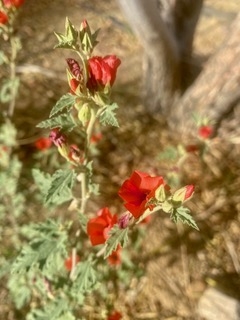
Helpful links
‘Childerly' is a hybrid developed in England
You can see some other colors here
A search of “mallow” at High Country Gardens gives you some closely related plants that will also do well in our area
Seeds from the Tucson area may be more likely to give you shades other than apricot
*By the way, Wikipedia has lists of the most common plant species epithets (A-H and I-Z)!
- Author: Carmen Kappos
“Overwatering is the number one killer of houseplants,” says Mr. Ernesto Sandoval, Manager and Curator of the UC Davis Botanical Conservatory. Overwatering encourages disease, pests, and can smother roots that need oxygen. With overwatering, roots can die and rot.
When to water depends on many things: the type of plant, the amount of light, temperature, the potting mix. All these things have an effect on when the plant will need water. So how to tell when to water?
Here are some good tips on determining when to water your houseplants.
Tips:
- Your finger is a really good moisture meter. Use your finger to check for moisture in the top 1” of potting mix.
- Leafy plants: let the potting mix start to dry until barely moist between watering.
- Succulents and stem succulents: the top 1” of potting mix should feel mostly dry between watering.
- Get familiar with how heavy the pot is right after watering, dry potting mix is much lighter in weight than when it is wet.
- Dry potting mix is also lighter in color than wet potting mix.
Techniques:
- Water so that some water drains out the hole in the bottom. This ensures that the water has gone into the entire pot and has reached the root zone.
- Do not let the pot sit in water, empty the saucer or tray after watering. Drained water contains salts and minerals that can be reabsorbed into the pot. This briny water is not good for the roots.
- Pots can be elevated with material like pebbles, in the tray, to keep the pot from touching drained water.
- Usually tap water is ok to use for most houseplants, however softened water contains salt that will quickly kill plants. Water with Boron should not be used on container plants.
- Water from wells may be ok to use, it depends on the amount of minerals dissolved in the well water.
- If there is a buildup of crusty minerals on the pot or potting mix, gently remove the crust and flush out the pot with clean water that does not have minerals, then let drain.
- Use a well-draining potting mix. Most commercial potting mixes hold too much water. Small pumice rock sold at plant nurseries can be added at half the total volume to improve drainage in potting mixes.
The UC Davis Conservatory houses over 3000 plants in more than 150 different plant families. Responsible for the care and development of the collection, with a degree in plant biology, Mr. Sandoval has watered and cares for many plants. In his video talk on houseplants Mr. Sandoval advises to err on the side of under watering. Check out his talk on houseplants at: https://youtu.be/n60Iia0XxUE
_______________
Bonus tips from the editor: If you're seeing lots of little gnats buzzing around the pot, you're probably keeping the plants too wet. Seeing lots of burned edges on leaves? Either you have accumulated salts or may be getting plants too dry between waterings.
- Author: Dustin Blakey
I was out last night above the river to take some pictures, and I noticed that as the sun went behind the mountains I was joined by some unwelcome visitors: mosquitoes.
I suspect they were males as I didn't end up with any bites, and they were mostly hovering above me. A few landed so I squished them. I don't know what kind they were other than "generic mosquito." I was in the same area last week and didn't encounter any, so I think it's just starting.
All this to say, it's probably worth thinking about taking typical mosquito precautions when recreating outdoors in the evening away from town. Here is some information about mosquitoes from UC IPM.
The Owens Valley Mosquito Abatement Program has a good page on Facebook that updates progress. You can like their page to keep informed. https://www.facebook.com/OVMAP/
- Author: Dustin Blakey
In times of crisis and stress people often try to help each other out by passing along information they have gathered. This is a commendable act, usually done with the best of intentions. But with the proliferation of information sources available to us now, it is easy to pass incorrect information.
Even if one's intentions are good, it is possible to do harm by spreading misinformation. Please do due diligence in checking any information you wish to share with others to ensure it is accurate and up-to-date. Some of the information being spread online now is not only ineffective, it can be dangerous. (Do not consume bleach!)
These are some reliable sources of information about the COVID-19 virus.
- CDC's COVID-19 Main Page: https://www.cdc.gov/coronavirus/2019-ncov/about/index.html
- California Dept. of Public Health (CDPH): https://www.cdph.ca.gov/Programs/CID/DCDC/Pages/Immunization/ncov2019.aspx
- CDPH Press Releases: https://www.cdph.ca.gov/Programs/OPA/Pages/New-Release-2020.aspx
- Travel Guidance from CDC: https://www.cdc.gov/coronavirus/2019-ncov/travelers/index.html
- Social Distancing: https://hub.jhu.edu/2020/03/13/what-is-social-distancing/
- COVID-19 Tracking Map (Johns Hopkins): https://www.arcgis.com/apps/opsdashboard/index.html#/bda7594740fd40299423467b48e9ecf6
- Inyo County Public Health Dept: https://www.inyocounty.us/services/health-human-services/public-health-and-prevention-division
- Mono County Public Health Dept: https://monocovid19-monomammoth.hub.arcgis.com/
If you see a post on Facebook, Twitter, Instagram or email that sounds especially intriguing, perhaps it's different than what you've been hearing, I recommend checking with the website snopes.com to see if it is a hoax. It's not infallible, but is a good test for hoaxes. An easy way to to this is to type part of the title or text of the post into Google and add the word snopes.com at the end.
Don't forget that gardening can be a relaxing way to enact social distancing!




